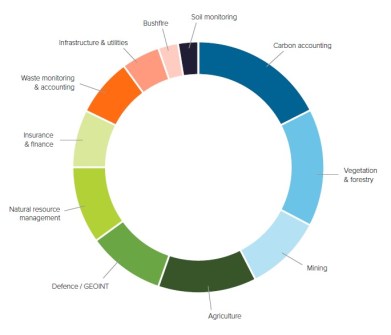
FrontierSI has released a new report highlighting the need for a coordinated calibration and validation (cal/val) network to strengthen Australia’s expanding commercial Earth observation (EO) sector.
Titled ‘Australian Earth Observation Data Quality: Exploring the Need for a Coordinated Cal/Val Network to Support the Commercial EO Sector,’ the report was prepared by FrontierSI for CSIRO as a way of evaluating the current state of commercial EO cal/val activities in Australia.
Its objectives were to assess the status, maturity, and development of commercial EO activities, explore the need for a coordinated cal/val network, and identify the specific requirements such a network could address.
The report points out that all of Australia’s current and anticipated future Earth Observation missions are on, or will be, on smallsats, including CubeSats and microsats, which results in concomitant technical trade-offs that affect the data quality.
The report also finds that calibration and validation (cal/val) are essential processes in the EO data management pipeline, ensuring data usability and accuracy by end users.

Yet even though Australia boasts world-class cal/val sites, the current use of these resources is fragmented.
The report stresses the need for a cohesive cal/val network that would improve data quality, support smallsat missions and benefit the broader EO community.
Key recommendations include:
- Establishing a national cal/val network to support the commercial EO sector.
- Developing a comprehensive repository for cal/val methods, datasets, and protocols.
- Leveraging the commercial space sector to maximise the value of existing infrastructure.
- Piloting an end-to-end cal/val case study for a CubeSat EO mission.
A previous FrontierSI report published in 2021, sought input from the Australian space and Earth observation community to better understand its quality assurance requirements.
That report reached the conclusion that “Investment is required to uplift Australian calibration and validation infrastructure and capability to support Australia in becoming a global leader in testing and quality assurance for domestic and foreign satellite earth observation missions, accelerate the growth of the Australian space sector, and create opportunity and resilience for the nation”.
Its recommendations included:
- Creation of an Australian Centre for Earth Observation Quality Assurance
- Coordination of quality assurance infrastructure, maintenance and research, across Government, research and industry
- Provision of quality assurance infrastructure and quality indicator certification services
- Creation of a centralised point of access to data provenance tools
- Deployment of a series of satellite cross-calibration radiometers to improve accuracy and consistency between optical satellites.







